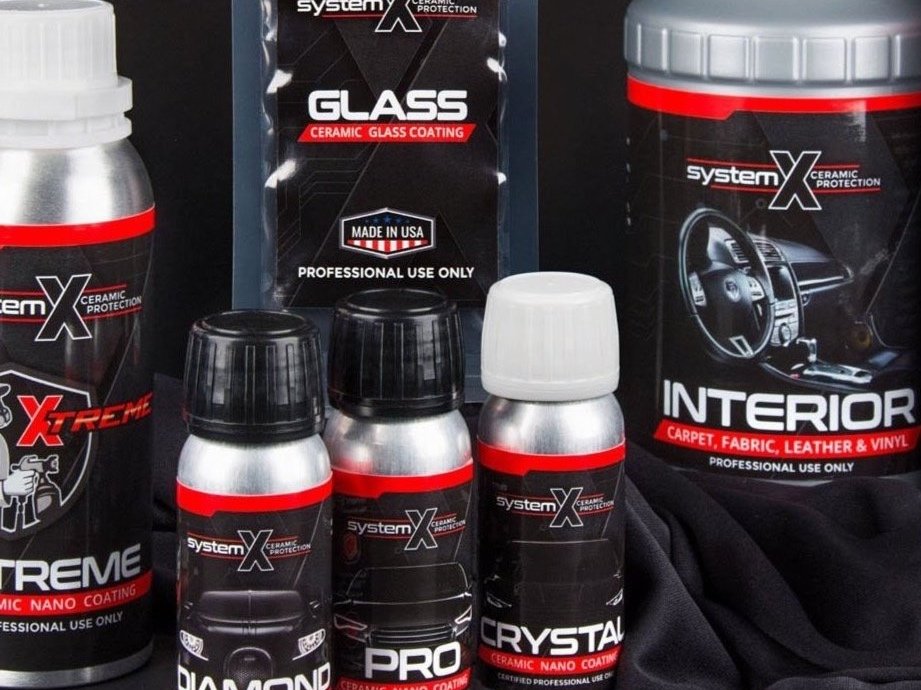The Long-Term Perks of Picking Ceramic Coating Philadelphia for Your Automobile
The Long-Term Perks of Picking Ceramic Coating Philadelphia for Your Automobile
Blog Article
Why Ceramic Layer Is the Ultimate Option for a Remarkable End Up
Ceramic finishing has arised as a leading solution for those looking for a remarkable surface for their cars, many thanks to its impressive sturdiness and safety functions. What factors truly set ceramic finishing apart?
What Is Ceramic Coating?

When applied correctly, ceramic finish produces a hydrophobic surface that fends off water and dust, making it easier to cleanse and preserve. Unlike typical waxes or sealers, which usually use brief defense, ceramic finishes can last for a number of years, relying on the item high quality and application technique. The procedure of using ceramic finishing needs precise prep work, consisting of thorough cleaning and sometimes paint improvement, to make sure optimum bonding and efficiency.
Ceramic layers are not limited to automotive surfaces; they can additionally be made use of on numerous products, including glass, metal, and plastics, giving a functional remedy for improving security. In general, ceramic covering represents a considerable advancement in surface security innovation, incorporating both visual and useful benefits for a wide variety of applications.
Benefits of Ceramic Covering
While several surface area protection choices exist, the benefits of ceramic finishing stick out as a result of its unique buildings and durable performance. Among the key advantages is its outstanding durability. Ceramic Coating Philadelphia. Unlike typical wax or sealers that need constant reapplication, ceramic layers give a durable layer that can last for a number of years, dramatically lowering maintenance initiatives
Another remarkable benefit is boosted security versus ecological pollutants. Ceramic coverings develop a hydrophobic surface that pushes back water, dust, and various pollutants, making it less complicated to cleanse. This feature not only maintains the lorry's appearance yet also minimizes the risk of deterioration and oxidation, especially in severe weather.
Furthermore, ceramic layers provide superior resistance to UV rays, avoiding fading and destruction of paint with time. This UV security is important for preserving the visual value of surfaces and automobiles revealed to direct sunshine.
In addition, the glossy surface accomplished with ceramic coating improves the general aesthetic allure, offering surfaces a showroom-quality shine. On the whole, ceramic finishes represent a substantial advancement in surface area security technology, offering enduring advantages that cater to both aesthetic and functional requirements.
Just How It Works
Comprehending the scientific research behind ceramic coverings discloses how they give such exceptional defense and longevity. At its core, a ceramic layer is a liquid polymer that chemically bonds with the automobile's manufacturing facility paint. This bonding produces a safety layer that is both oleophobic and hydrophobic, repelling water, dust, and oil. The primary component of many ceramic finishings is silicon dioxide (SiO2), which is acquired from quartz. This substance adds to the finishing's solidity and resistance to scrapes, UV rays, and environmental contaminants.
The application process includes numerous actions, consisting of surface preparation, which is essential to attaining optimal adhesion. When applied, the finish undergoes a treating procedure, during which it hardens and forms a semi-permanent bond with the paint surface area. This bond is what distinguishes ceramic coatings from why not check here traditional waxes and sealers, offering a longer-lasting protective obstacle that can endure for several years.
Furthermore, the density of the covering can improve its protective qualities, ensuring that it can hold up against extreme conditions. Inevitably, the scientific research of ceramic finishes incorporates innovative materials with innovative application methods to supply an exceptional level of defense and aesthetic enhancement for cars.
Comparison With Typical Techniques
The advantages of ceramic layers come to be particularly obvious when contrasted to typical paint protection techniques such as sealers and waxes. While waxes offer a temporary shine, typically lasting a couple of weeks to a pair of months, ceramic layers provide a durable safety layer that can endure for numerous years. This toughness dramatically lowers the frequency of reapplication, making ceramic coverings an extra economical solution in time.
Additionally, typical approaches typically call for comprehensive preparation and numerous applications to accomplish an acceptable degree of protection. In comparison, ceramic layers bond at a molecular degree with the vehicle's surface area, developing a durable shield against environmental contaminants like UV rays, acid rainfall, and road salts. This bond boosts the lorry's resistance to scratches and swirl marks, which are common with standard waxes and click over here now sealants.
Furthermore, the hydrophobic residential or commercial properties of ceramic coverings drive away water and dust, leading to much easier cleansing and upkeep. On the other hand, wax and sealant-treated surface areas can draw in crud, necessitating more regular washing - Ceramic Coating Philadelphia. In general, ceramic coatings not just give superior defense however also deliver an extra long-lasting and aesthetically attractive finish, establishing them as the favored choice for discerning lorry proprietors
Application and Maintenance Tips

Making use of a foam applicator, apply the layer in little sections, complying with the supplier's guidelines concerning density and overlap. Enable sufficient healing time in between layers, commonly 1 day, to ensure correct bonding. After application, it is vital to avoid direct exposure to water or severe components for at the very least a week to permit the finish to completely treat.
For maintenance, clean the lorry on a regular basis with pH-balanced soaps and avoid abrasive products. Touchless automobile cleans are advised to minimize damaging. In addition, making use of a ceramic upkeep spray can enhance the finish's hydrophobic residential properties and longevity. Regular inspections for any kind of signs of wear will certainly assist maintain the coating's honesty and protect that excellent surface.
Conclusion
In conclusion, ceramic coating emerges as a premium option for achieving a flawless automotive finish. By forming a durable bond with factory paint, ceramic finish properly shields against scrapes, UV rays, and environmental impurities.

Report this page